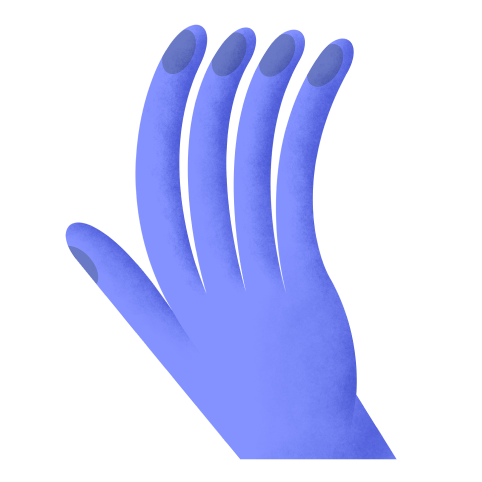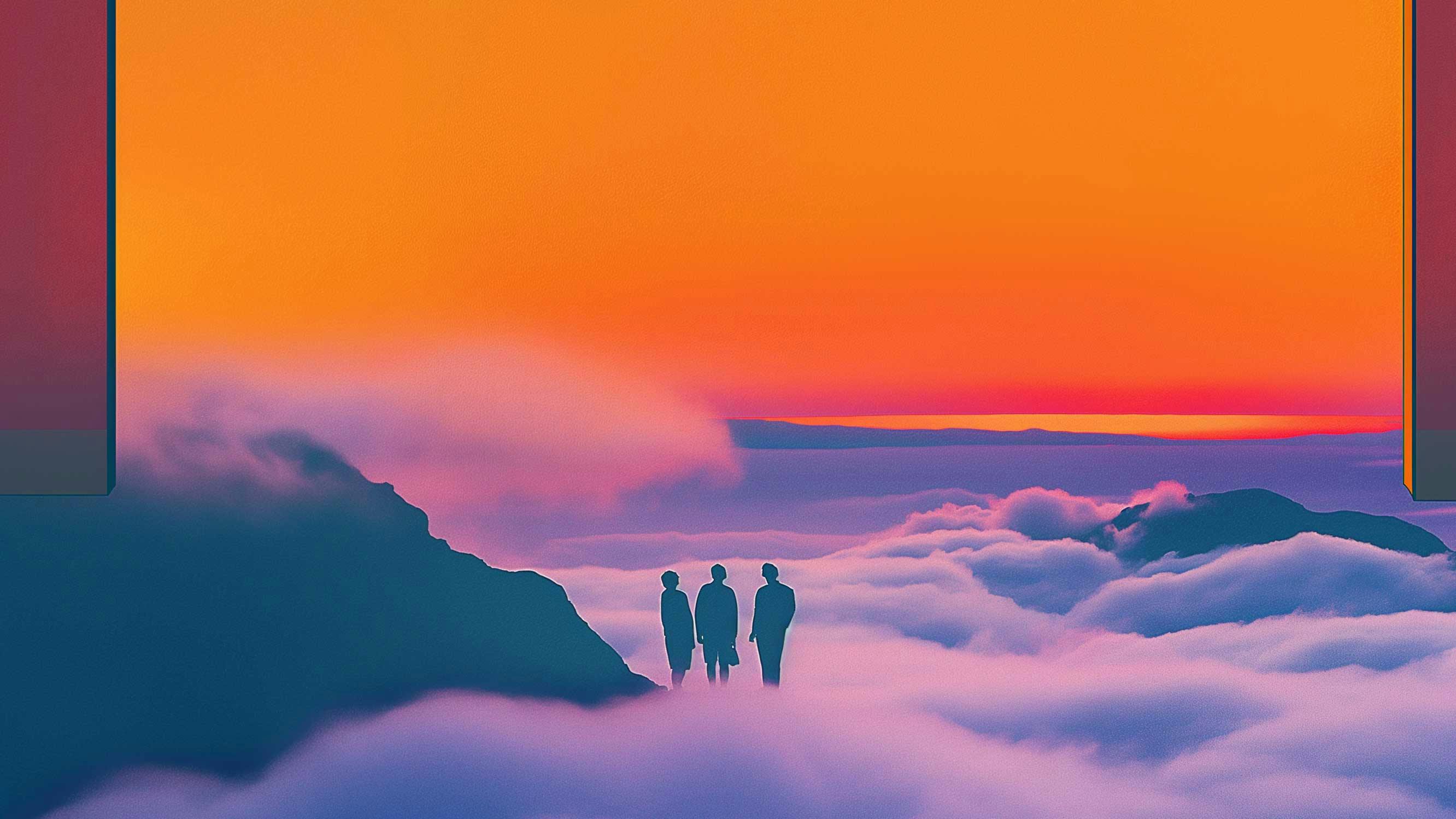Out of the Harbor: Illustrator and Student Jan Buchczik Talks Shop with Use All Five
Jan Buchczik is a student at HfG Offenbach near Frankfurt, Germany. He has also already made a name for himself as an illustrator for several international publications. We talked with him about his experiences as both a student and a professional.
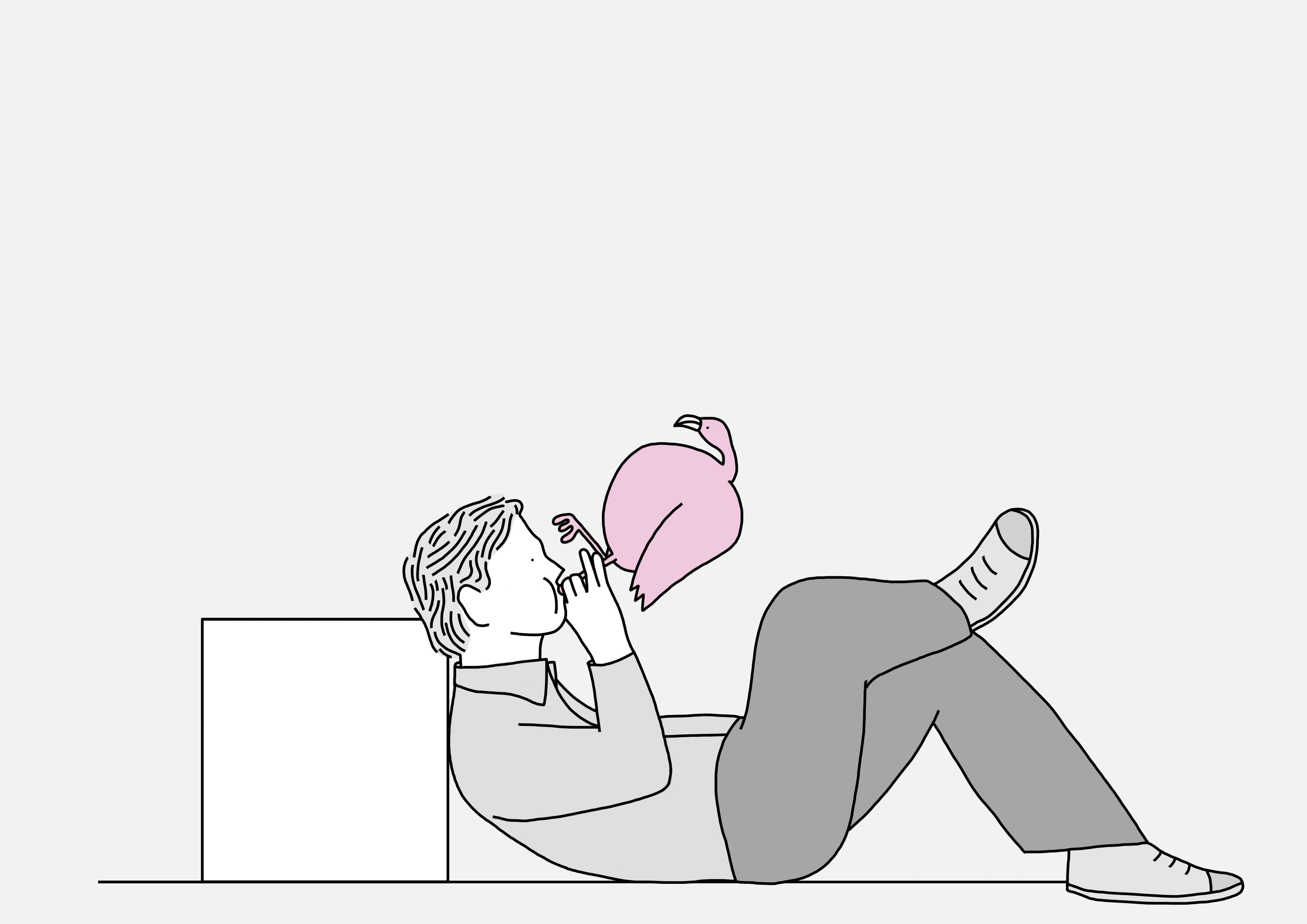
Let’s get right into it and talk about your incredibly simple and distinctive illustration style. How did you begin to draw like this? Is this the final stage of a longer evolution or have you always drawn in this style?
Jan Buchczik: I think I slowly started to draw like this just after I bought my first drawing tablet – but I don’t see this as a finished evolution. It’s in constant flux, even if it’s really simple changes which nobody except me notices.
I guess as long as I make new experiences as a person my drawings will change too. In the long run I’m not interested in using the same colors over and over again or settling for one way of drawing a house. All I know for now is I prefer digital to analog drawing and I love to draw people in more or less weird situations.
I’m a bit sick of all this talk about style, I think it’s overrated. From my point of view all those unique styles don’t come from people trying to have unique or fresh styles but more so by trying to tell the story the way they want to. It only works out if the way you are drawing matches with your way of thinking and the ideas you come up with. If the conceptual or visual idea is good enough then style becomes less important.
Germans are known for their simplicity and efficiency in product design (at least in the U.S.). Does your illustration style have anything to do with German culture? What kind of artistic trends do you notice in Germany?
Jan Buchczik: Not at all, I would rather say it’s more inspired by American and English illustrators – that might also be one reason that my first commissions all came from abroad and still most of them do.
I don’t have a really defined overview of what’s happening in Germany – I’m much more focused on looking abroad to find work that resonates with me. But what I can sadly observe is that Germany, at least nowadays, has a much more complicated relationship with illustrations than maybe Great Britain or the United States.
For example if you compare the amount of illustrations on packaging in the supermarket or illustrative logos in general, you’ll see that in Germany it’s mostly all about type and simple shapes. I can only guess why but I think in Germany illustration is always closely linked to childish, funny and not so determined stuff.
Don’t get me wrong I’m not saying everything needs or should have illustration. But I think a lot of opportunities are missed over here.
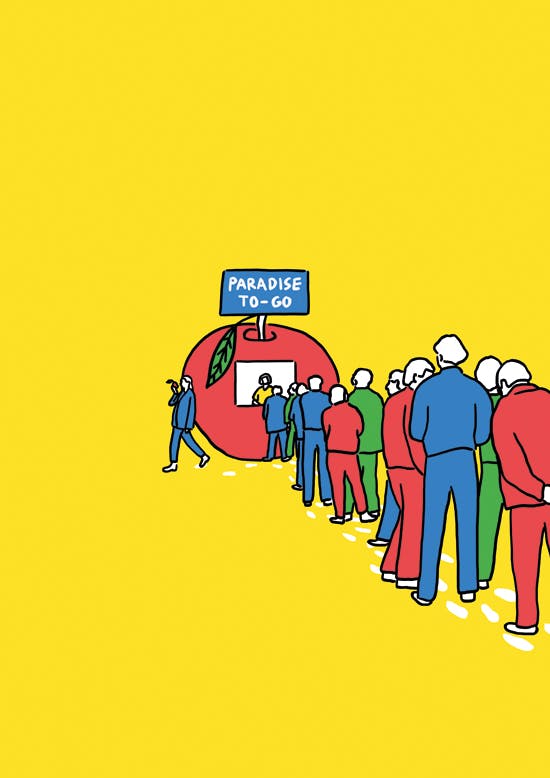
I often times have a title or some words in mind which then leads me to the image rather than the other way around. The notes might range from short stuff like "Take-Away Paradise", "Half-Dirty Clothes", to longer ones like "I Can’t Believe You’ve Survived All Those Cheesy Experiences" or "Designed To Give You Nightmares"
When you gave a lecture at the Use All Five office you told us about how you start with words before illustrating, can you elaborate on this?
Jan Buchczik: It’s not always the case but when I do non-commercial work I often times have a title or some words in mind which then leads me to the image rather than the other way around. You could say it’s just like a more abstract and artistic form of editorial illustration, where you also have a text to work with and have to find a visual way to communicate it and hopefully add another layer to the text.
The notes might range from short stuff like “Take-Away Paradise”, “Half-Dirty Clothes”, to longer ones like “I Can’t Believe You’ve Survived All Those Cheesy Experiences” or “Designed To Give You Nightmares”. When I look at them like that they seem to fall apart but for most of them as soon as I do a drawing to accompany them it feels balanced and right to me.
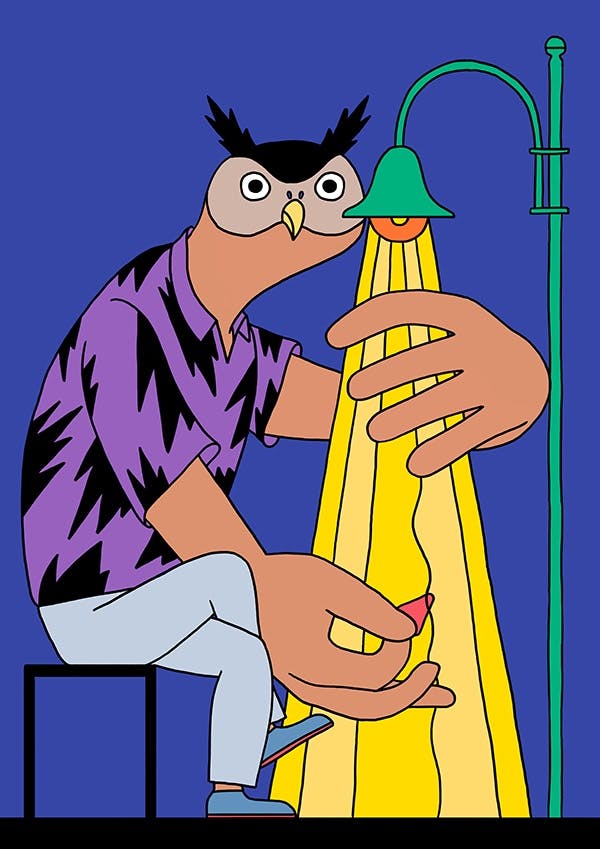
The crucial thing is to create a balance between a safe experimental harbor where you can try, fail and succeed at any way of expressing yourself and on the other hand leave the confinement of the university and get experience outside of that safe harbor.
As someone with experience both as an art student and as a working illustrator, what does art school get wrong? Do you have any practical fixes for things art schools tell their students?
Jan Buchczik: The crucial thing is to create a balance between a safe experimental harbor where you can try, fail and succeed at any way of expressing yourself and on the other hand leave the confinement of the university and get experience outside of that safe harbor.
From my experience most of the universities tend to be too much on either of the sides. Although I would definitely prefer a school which is putting the focus on being an experimental safe harbor, like the one I’m, still (!), attending. Also due to the sheer amount of time spent together, you learn much more from your fellow students than from your professor. To me a good professor should just act like someone who is directing traffic, creating a good environment to deal with criticism between students and leading the class like an anchorman or -woman with just a small amount of lectures.
As to practical fixes, not sure if this is a reality in some universities, but I would suggest a course where students get to know different fields of applied illustration and basic practical information on working as an illustrator. Maybe invite some professionals and have them outline their daily work, their struggles, their achievements, their way of pricing, their way of promoting their work and so on. But I’m sure there are tons of other things that will pop up if you dig a bit deeper.
What was your first work that was widely published, and how did you feel about it then and now?
Jan Buchczik: That was an online-only piece for Bloomberg View, exactly on my birthday in 2012. It felt great, so great that I have to admit my hand was a bit shaky while working on it, but I remember that the feeling of wondering how they found out about me was predominant. I still don’t know and I still consider it one of the best birthday presents ever.
Many of the people in your illustrations look like the same person. Where did this person come from?
Jan Buchczik: Some people say they look just like me but I can’t confirm that. But it’s true they must come from somewhere inside of me and through that inherit some of my character. But I don’t want to think too much about that and my head is already wandering to that one episode of Family Matters where Steve Urkel clones himself.
It’s truly so much more of a struggle to meet my own expectations rather than the client's but it’s also my biggest motivation and source of energy.
You’ve worked with a lot of different companies with different styles of their own – from Bloomberg Business to Zeit Magazine. How are you able to match your style with the expectations of client work?
Jan Buchczik: I always keep in mind that if they approach me they must already like my stroke, moods or way of thinking and consider it a good fit for their purpose. If they are looking for something specific they will mostly send examples of previous works of mine. So style-wise I don’t feel like I have to match expectations, it’s much more about finding a visual or conceptual idea which fits well with their needs. It’s truly so much more of a struggle to meet my own expectations rather than the client’s but it’s also my biggest motivation and source of energy.
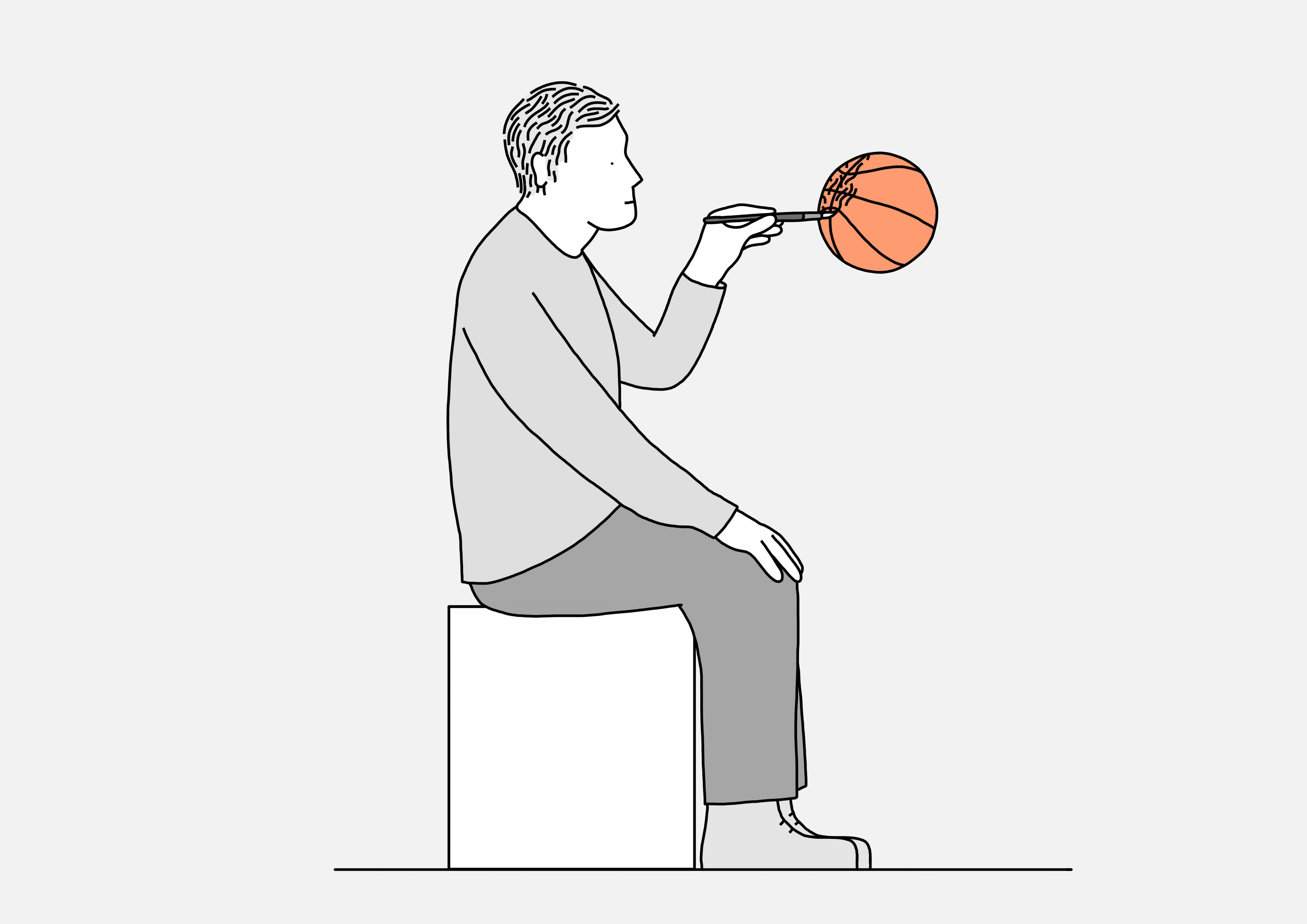
Where would you love to bring your dot-eyed man next?
Jan Buchczik: I would love to see the characters pop up on book or LP covers, take them to folk tales or house them in a cooking book.
